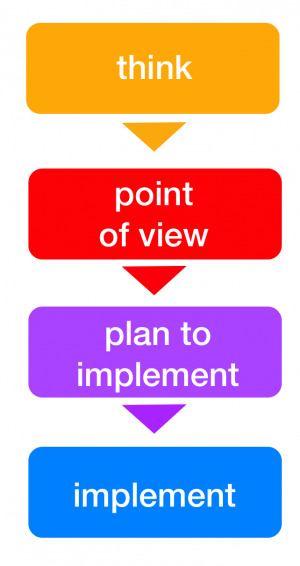We have all had projects that have gone well and a few that we wish had gone smoother. What do these have in common?
. . . The value of doing the research first and letting the factual results guide you.
Jim Hackett, Steelcase CEO, thought about this. In a paper he wrote for the Harvard Business Review he reviewed two product development project that had decidedly different results (See the paper HERE). What he discovered was the value of doing the research first and letting the factual results guide you. All too often we succumb to letting preconceptions drive a project instead of facts. Further, unless all of the stakeholders are in agreement you can get stuck in circular thinking where it is difficult to arrive at a successful outcome. Only then to you proceed to implementation,
After much research, he developed a four-part process to give development teams at Steelcase and its dealers the mental tools, intellectual resources, and time they needed to think a project through to completion. In the think phase, the team finds out as much about a potential project as possible. Team members ask questions, contact experts, do research, and come up with a range of options. In the point-of-view phase, they select the option they will pursue. Once the point of view is formed and cleared with the company, all second-guessing comes to an end and, in the plan-to-implement phase, the group determines the process by which the project will be completed. Only after full-scale practice runs with everyone involved does the project actually go forward in the implementation stage.
Few of us bring a product from idea to introduction. But this same process can be applied to every project we work on — from redoing our bathroom, to designing new workplaces.
Interested? Give us a call and we would be pleased to stop by and discuss how we could put these lesson to work for you.


